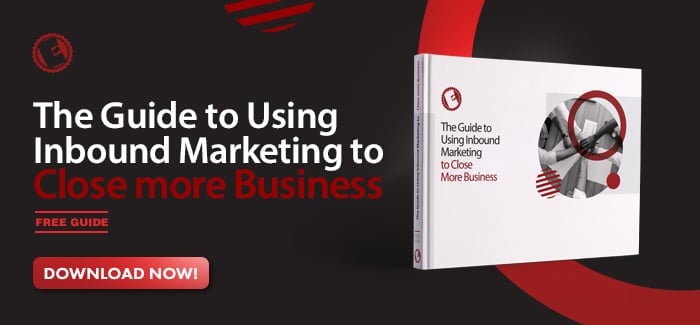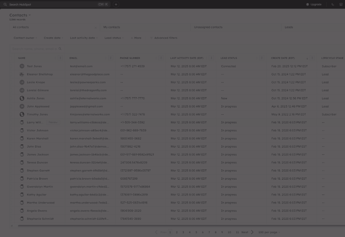It's no secret that customer churn is a huge problem for businesses of all sizes. In fact, it's been called "the silent killer" of companies. And while there are many factors that contribute to customer churn, one of the biggest is buyer regret.
Buyer regret can be defined as the feeling of disappointment or dissatisfaction that a customer experiences after making a purchase. It can be caused by a number of factors, including (but not limited to) poor product quality, lack of customer service, and unmet expectations.
Fortunately, there are several ways to identify and reduce customer churn. One of those is by developing a strong inbound marketing strategy that educates your leads and personalizes their shopping experience.
In this article, we'll discuss how to implement this strategy in your business.
What is Customer Churn?
Customer churn, or customer attrition, is the rate at which customers stop buying or subscribing to your product or service. One way to calculate churn is with a percentage. Let's say you began the year with 1,000 customers but finished it with 800. Your customer churn rate would be 20 percent.
Customer churn can be detrimental to businesses because companies usually spend a lot of money (through marketing and employee hours) to get the customer in the first place. And, as we know, it costs much less money to keep an existing customer than it does to get a new one.
Fortunately, there are ways companies can reduce churn, especially with inbound marketing.
Types of Churn
Churn is a problem that all businesses face, but it can take on different forms. Let's explore the different types of churn companies should be on the lookout for.
Revenue Churn
Revenue churn happens when a customer stops spending money with your company. It's similar to but different from customer churn because it tracks the amount of revenue lost in a given period.
Competitor Intervention
If a competitor intervenes and offers a better product or service, your customers may start to churn. This is especially true if the customer is unhappy with your product or service. While some of your customers leaving for competitors is unavoidable, focusing on why these customers are leaving is vital for your business.
Unsuccessful Onboarding
If a customer has a bad experience onboarding, they're likely to churn. Onboarding is the process of getting a new customer up and running with your product or service. It's common for churn to occur at the beginning of the customer journey if the onboarding program is lacking.
Desired Features or Functionality Lacking
Customers crave personalized experiences, and if your brand or product isn't offering a feature or functionality they want, you risk losing them. Of course, as your customer base grows and becomes more diverse, it's natural to have customer churn, as not all of them will be excited about the direction you're headed or the new product or services you offer. This type of churn isn't always bad, but it's something to be aware of, especially if your company is in a growth stage.
Company Closure
B2B companies can lose customers due to their customers' businesses closing or merging with other businesses. This type of churn is unavoidable and common. If your company has a dedicated customer acquisition strategy, however, making up for this type of customer churn shouldn't be difficult.
Underappreciated Brand Values
Sometimes a certain type of customer doesn't align with your brand values. Customers make your flywheel run, but just like a car, you have to put the right fuel in your engine. In the big picture, your brand will suffer if you conform too much to the wrong segment of your target audience.
Plateaued Growth
This is an example of natural customer churn. For example, if you change a product from being a free stand-alone to putting it in a package for a cost, you will lose customers at first. But the customers you'll lose are those who don't want to pay for the product. If the product or service offers value, you should have no problem replacing those customers with ones who will happily pay more for your product.
How to Identify Customer Churn
Your customers are the lifeblood of your business. Losing them can be costly, both in terms of lost revenue and the time and effort it takes to replace them. So how do you identify customer churn? And more importantly, what can you do to prevent it?
Establish Customer Churn Metrics
One of the best ways to start identifying customer churn is by establishing churn metrics. First, you should recognize what churn means for your company. For example, churn could mean the customer cancels a subscription, uninstalls your app, or doesn't return to purchase your product. You can document and track these metrics with HubSpot's free Customer Service Metrics Calculator.
Gather Customer Feedback
Another key factor in preventing customer churn is gathering feedback from your customers. This feedback can come from surveys, interviews, or social media platforms like Twitter or Facebook. Sometimes customers will tell you when they're unsatisfied, which can help build a fuller picture with both qualitative and quantitative feedback.
Check In With Your Customer Success Team
You can send out your customer success team to find out if customers are unsatisfied so they don’t have to tell you. This team's job is to monitor individual accounts and reach out to unhappy users. This helps your company break down any drawbacks before reaching out to your support team.
Prioritize Proactive Customer Service
This means your business purposefully identifies and solves problems before they affect the customer experience. During this process, it's common to find points of friction that were previously undiscovered.
Monitor Community Forums and Third-Party Review Sites
A handy resource you can leverage is your community forum and third-party review sites. If you notice the same users bashing your products repeatedly, you know these people are at a higher risk of churn.
What Causes Customer Churn?
Causes of churn can be personal and unique to every customer, but there are four main categories: price, product/market fit, user experience, and customer experience.
Price
If customers find a more cost-effective solution to their problem, they may churn.
Product/Market Fit
If salespeople are more considered with hitting a quota than selling to good-fit customers, the result will be churn within a few months of purchase.
User Experience
If the user experience with software or applications is glitchy or difficult to use, a customer may churn.
Customer Experience
If a customer's experience interacting with different parts of your brand—for example, your marketing content, social media channels, customer support team, and account managers—isn't positive, they may churn.
Five Steps to Reduce Churn and Eliminate Buyer Regret
Inbound marketing is a marketing strategy that helps potential customers find your company, products, and services. But it can also be used to keep current customers and sell more products and services to them.
1. Lean into your best customers.
Instead of redirecting time and resources to retaining any customers on the brink of churning, you should focus on retaining the most profitable customers.
2. Be proactive with communication.
Customer churn is called the silent killer because customers are able to silently cancel their subscription to your services and go somewhere else before you even notice. They don't have to send you an email or tell you their reasoning. They are simply there one day and gone the next.
By being proactive in your communication, however, you can hopefully grab their attention before they run into any problems or need help using your solution. By reaching out, you are showing you care about their experience and want them to succeed.
3. Define a roadmap for your new customers.
It can be overwhelming when you start a new product or service. If customers can't figure out how to use it right away, they might lose interest.
To help new customers understand your product or service, it is helpful to set up a road map that will guide them through your product's features, functionality, and process. This way, you can manage customer expectations and control the pace at which they learn more about your product.
It is important that you help your customers feel successful. This way, they are less likely to leave. You should always monitor and update your onboarding process to fix any problems or remove potential roadblocks.
Here are some inbound marketing strategies you can deploy:
The Welcome Email
Warm customers up to you and your services by sending them a welcome email that provides helpful links and pieces of content designed to set them up for success.
New Products and Features
Change and transition can be difficult for anyone. If you recently released a new product or feature and you need to get your customers up to speed, be sure to speak to those changes in your onboarding process. Make easy-to-access videos, articles, and FAQs that provide assistance, and refer to them often in your communications.
Continually Improve Your Process
As the expert on your product, you are sure to have blind spots, and something that is obvious to you may not be so obvious to others. As you deploy your onboarding process, leave room to improve it over time as you gain feedback on the process itself. If you notice that you are losing customers during the onboarding process, you may want to consider an overhaul or add some extra steps to help.
4. Offer Incentives.
Show customers it’s worth sticking around by giving them special things—a promo, discount, loyalty program, etc. These types of incentives can keep customers interested and give them multiple reasons to stick with your company, especially as time goes on and interest may start to wane.
5. Analyze Churn When It Happens.
You should be using data before customers churn to build strategies to proactively prevent it from happening. The key is to use both your churned and happy customers to predict key signs of customer satisfaction and dissatisfaction. As trends begin to develop, your company will get even stronger at predicting churn and you can begin to build world-class prevention strategies.
Key Takeaway
Customer churn is a silent killer, especially when companies struggle to identify the reasons their customers are leaving. Fortunately, there are several ways to identify and reduce customer churn. Understanding churn and developing strong churn-prevention strategies, in turn, will lead to happier customers and more revenue for your business.
To learn more about inbound marketing and how to use it to reduce your customer churn, download our Guide to Using Inbound Marketing to Close More Business.



